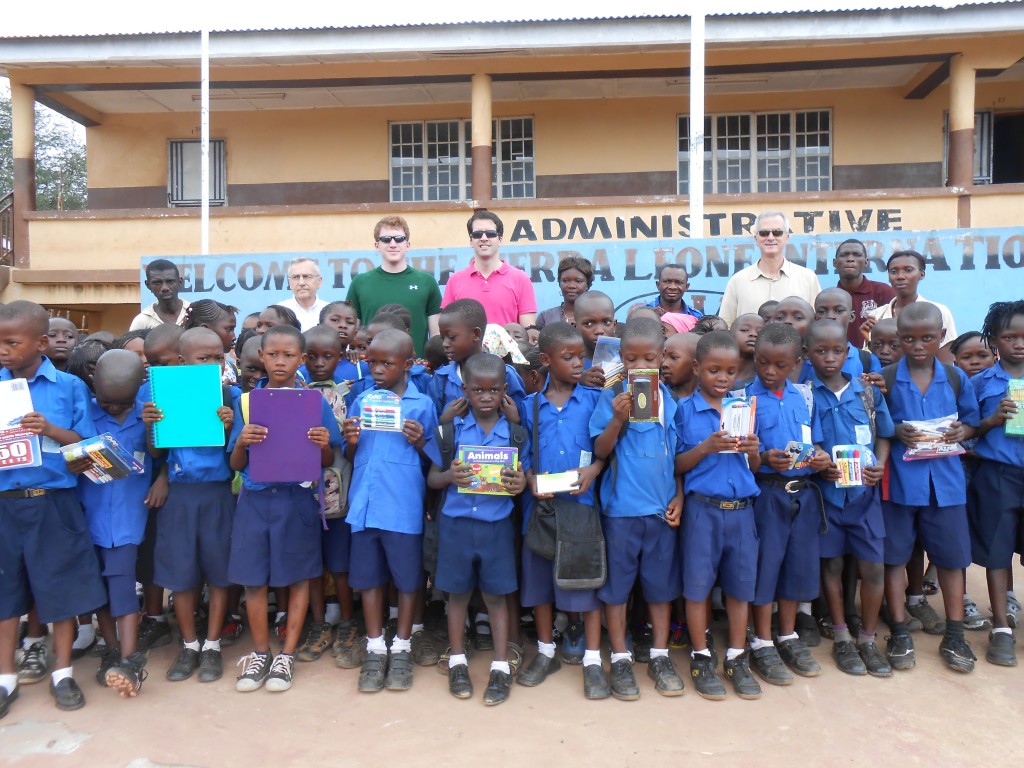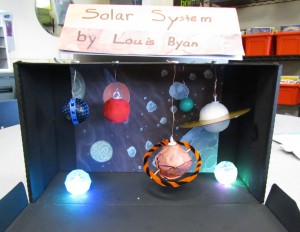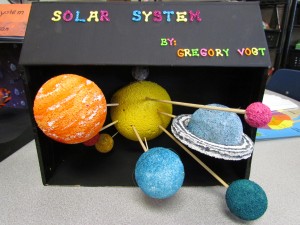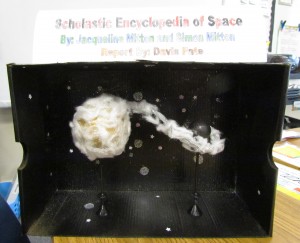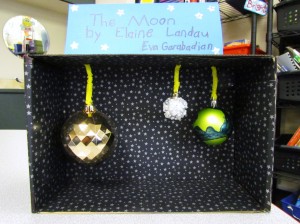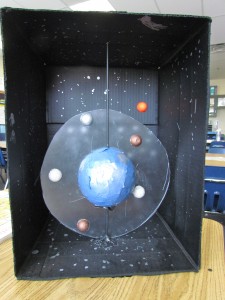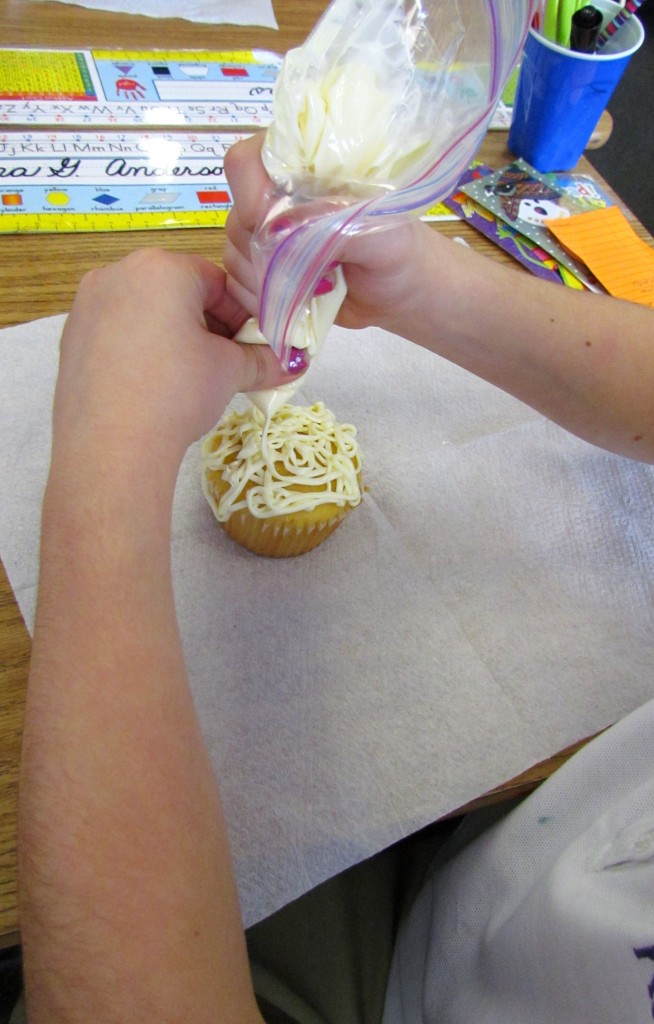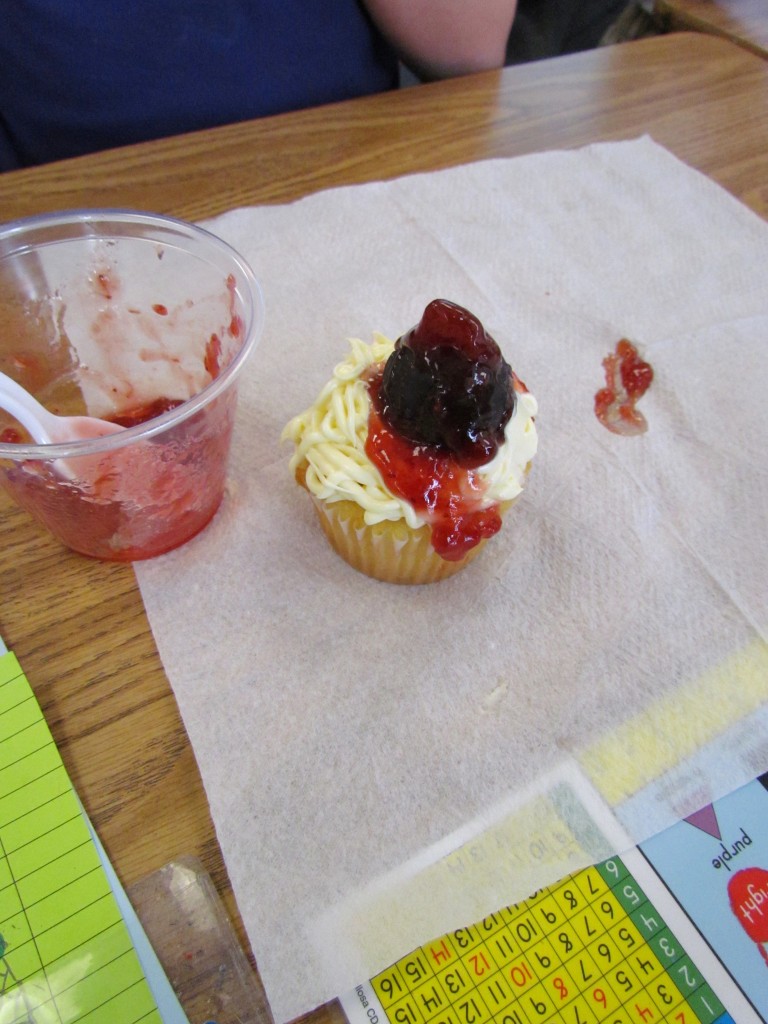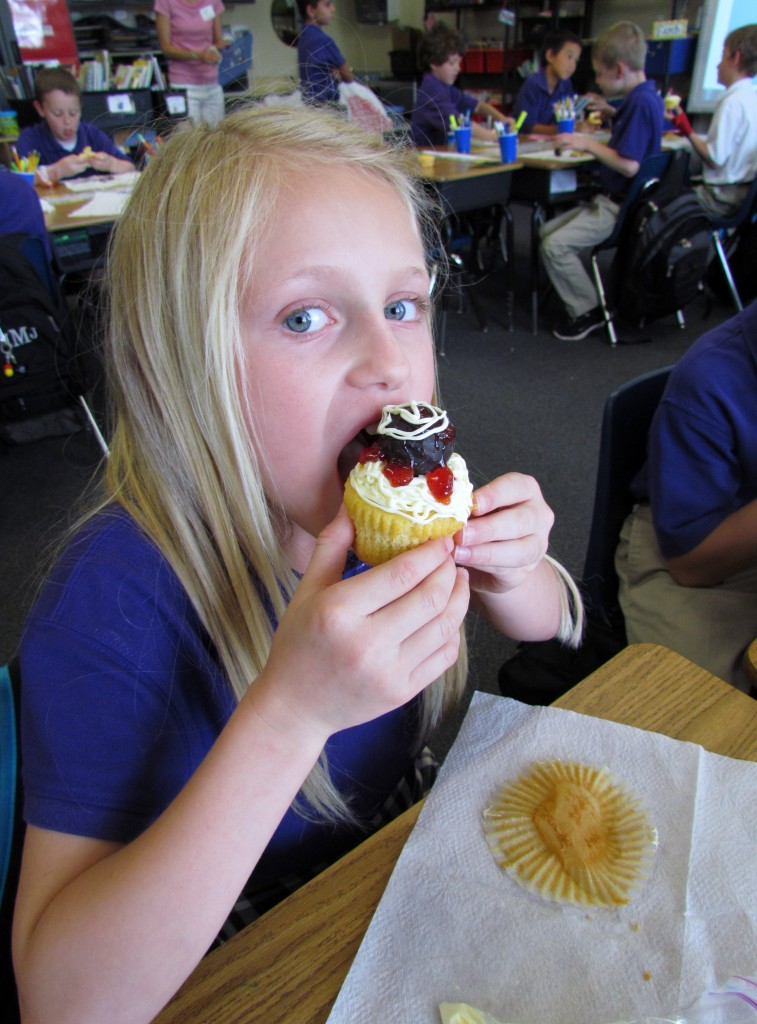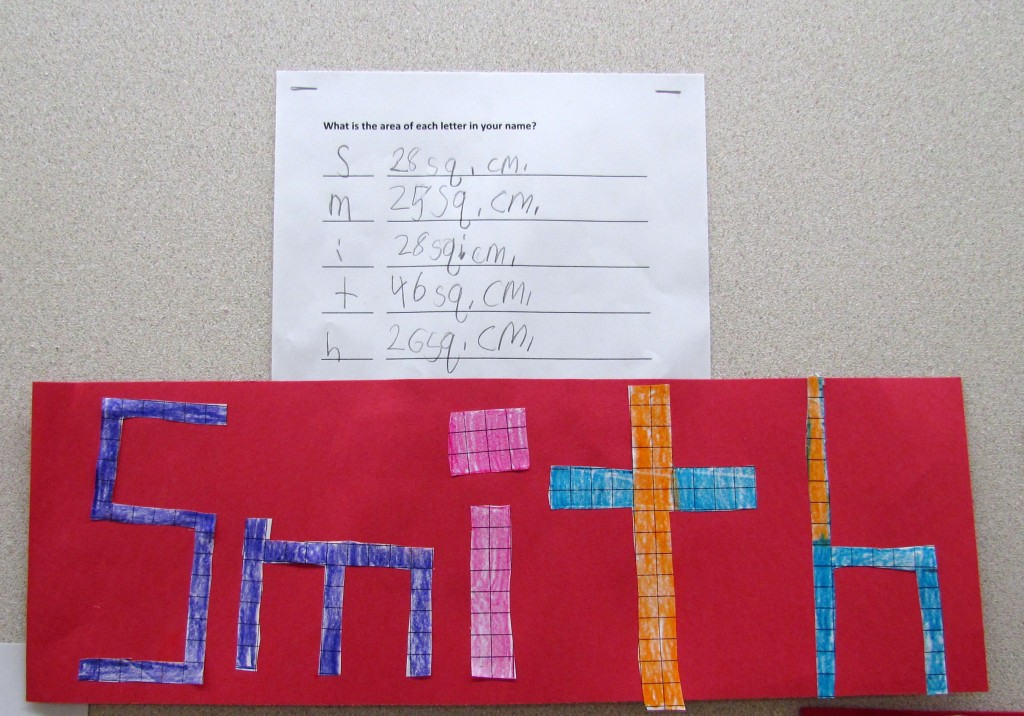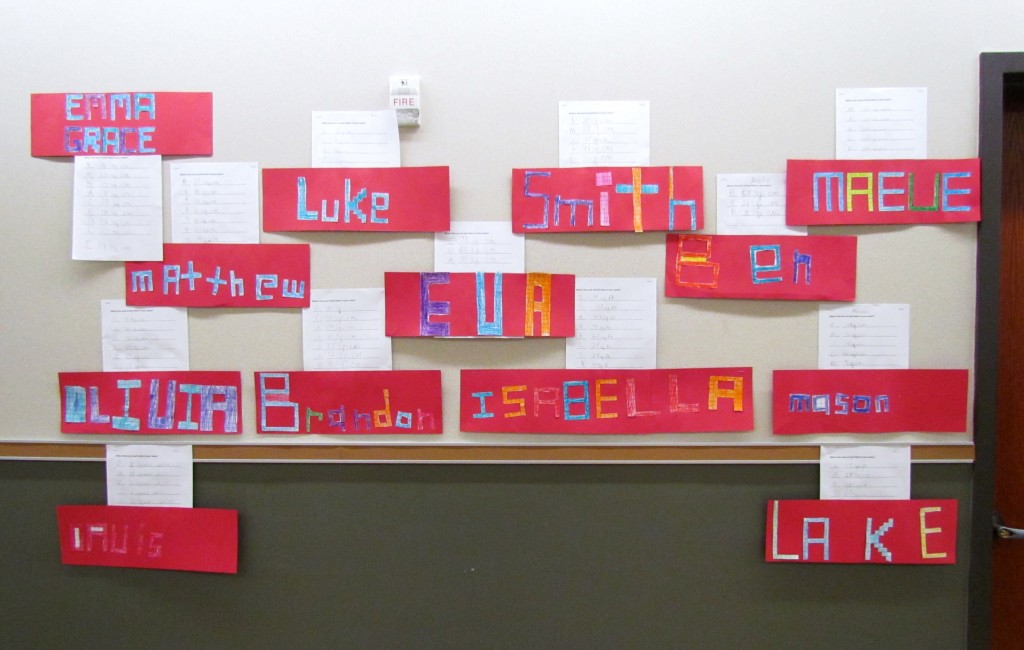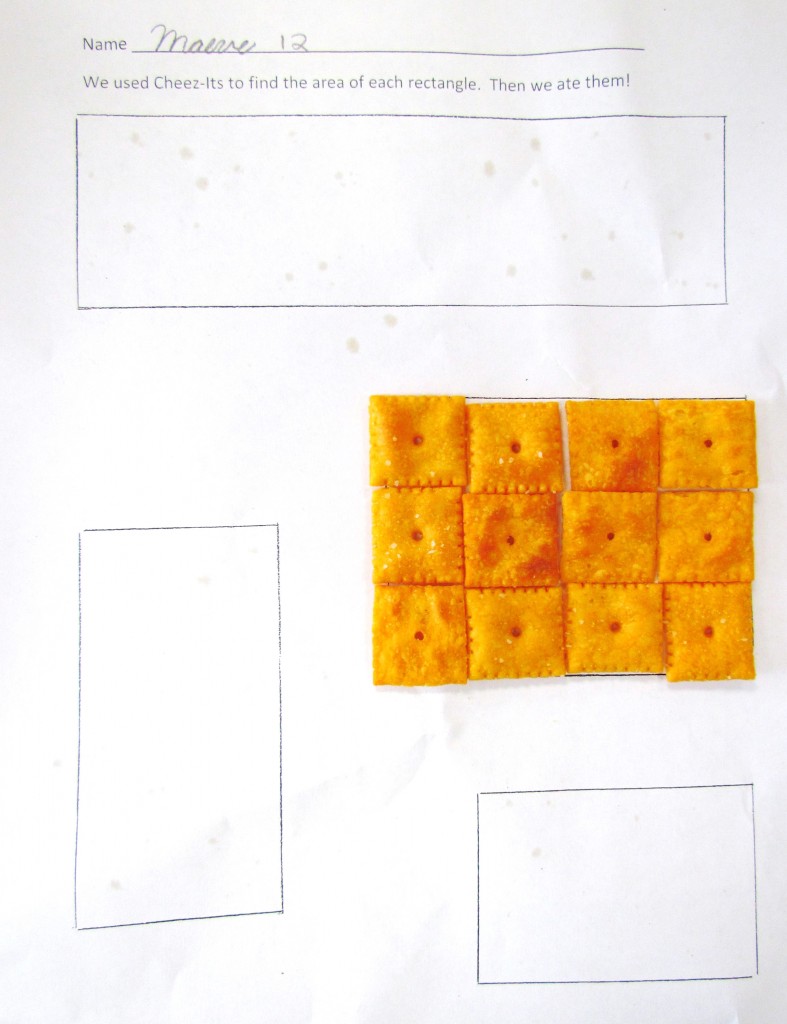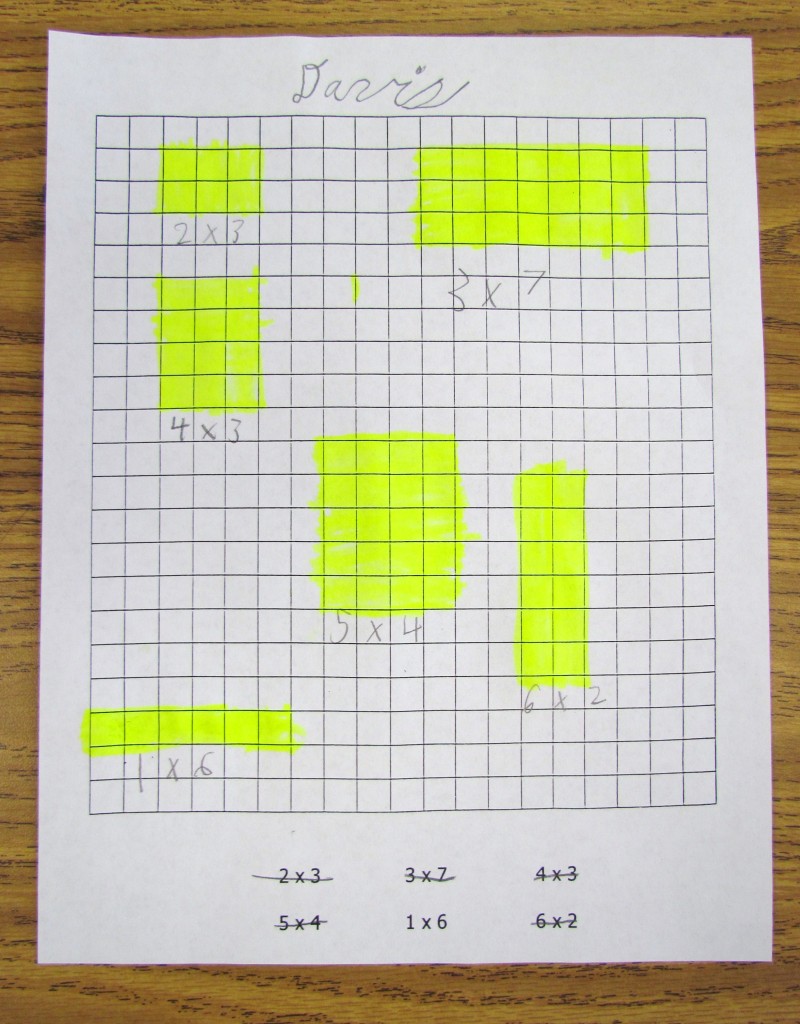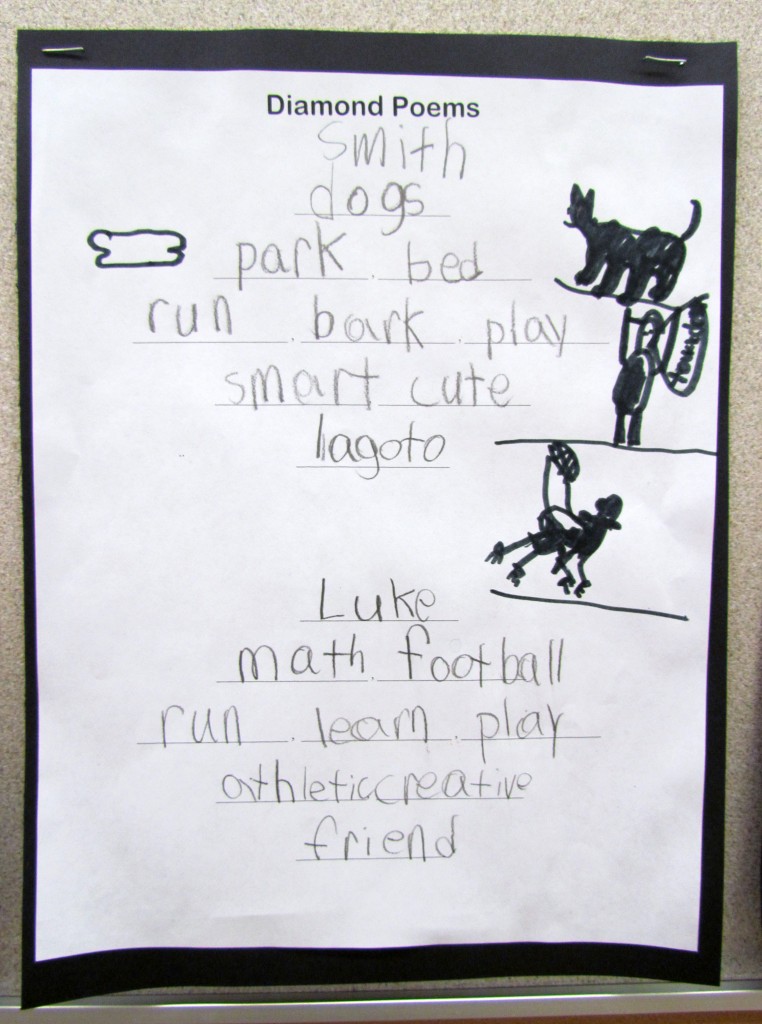Solar System Book Reports
Spaghetti and Meatball Cupcakes
Area of our Names
Reviewing Math Concepts
Area and Perimeter
We have been studying area and perimeter in math. The perimeter is the distance around a shape. The area is the amount of space inside a figure and is written in square units. If you purchase sod, tile, fabric, carpet, or paint, you need to know how to compute area.
We used Cheez-Its to compute the area of rectangles. Each Cheez-It is an inch square. We briefly discussed that length times width equals area. Afterward, we ate our math lesson!
How many squares cover each rectangle? We noticed how the squares look like the arrays we constructed in the multiplication unit.
Chris Rumble Visit
More Multiplication
We used a grid to demonstrate arrays. The equation 2×6 means two rows of six. We will connect this concept to area and perimeter later this week.
Then we used the multiplication table to find products. This site would be an excellent way to practice multiplication facts this spring and through the summer.
A Second Grader’s Brain
By Hank Pellissier
The second grader’s brain
“What happens if we’re late, Daddy? Will something bad happen? I don’t wanna’ be late!”
Second-graders have a propensity to worry. They can fret about nightmares, the dark, their clothes, their homework, or their stomach aches that might — in their agitated minds — be a lethal disease. They hate making mistakes, not finishing tasks, and especially losing. They have to be first, correct, punctual, best, and perfect. What’s wrong with these little nut-cases? Are they blooming neurotics? Hypochondriac loons?
No, they’re not. Morose sensitivity in this age group is actually proof that their brain is developing properly. Seven-year-olds can finally grasp concepts like space, direction, distance, and time. They now understand that the clock is ticking forward. Suddenly, schedules, routines, calendars, plans, predictability, rules, justice, and assignments become excruciatingly serious causes for concern.
Neurologically, what’s buzzing and building inside the second-grade brain? Jane Healy, author of Your Child’s Growing Mind, has defined them as “avid learning machines.” Marguerite Kelly, Washington Post family columnist, labeled second grade as “the age of reason” touched with a “patina of sadness.”

